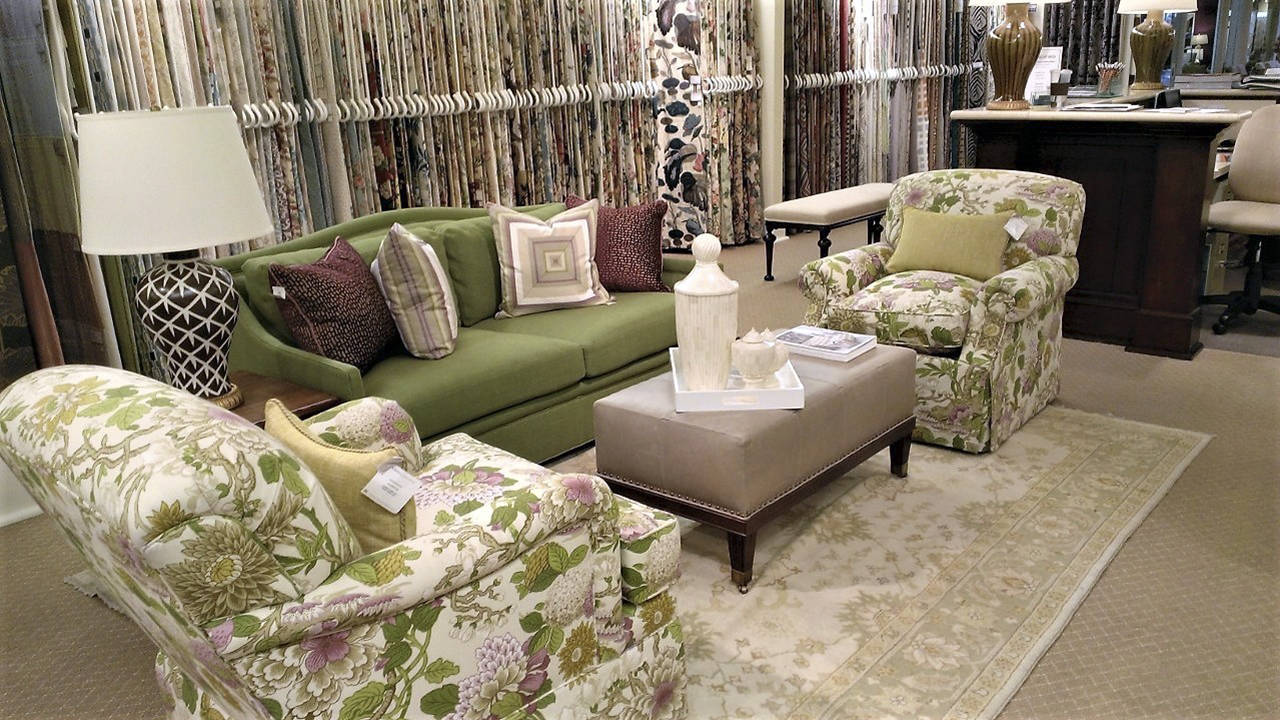For years I have been visiting design centers in San Francisco, Denver and Seattle. Anyone who likes fine furnishings and hasn’t been in a design center really needs to go.
Exploring the showrooms and admiring finely crafted furniture, beautiful textiles and wonderful lighting is fun. For me, there has always been a sense of wonder in wandering showrooms. Almost all the items are out of my financial reach, but the inspiration costs me nothing.
Twenty years ago, design centers did not welcome the public (end retail users) unless they were escorted by their designer or architect — “The Trade.” In the late 1990s, while in San Francisco, I slipped past the concierge desk and acted like I belonged there. Carrying a briefcase helped.
Still today, most showrooms will sell only to designers and architects. A showroom is a wholesaler that sells mainly to designers, who then re-sell the items to their clients. Some designers charge full retail list price to their clients, while others add a percentage markup. For larger interior design projects, this is a business transaction that the client and designer negotiate.
However, design centers do welcome the public in their buildings now. I visited the Seattle Design Center (www.seattledesigncenter.com) recently and had a marvelous time browsing the showrooms. As always, when I first entered the building I felt a little intimidated. Beyond the concierge desk was a large light-filled atrium with showrooms on all sides. Each showroom had a storefront; all were impeccably dressed in fine furnishings. Everything looked luxe.
The first showroom I visited there was Jennifer West. They represent multiple quality home furnishing lines, such as Clarence House. As I looked through their fabric samples, which were hung like drapery panels, I came across one called Tigre Velours Soie — a gorgeous tiger-pattern velour made in Italy from 100 percent silk. It retails at over $1,800 per yard. So, imagine you needed 15 yards for a sofa — that would be $27,000 in fabric. That takes my breath away, but what an amazing sofa it would be!
Don’t let this extraordinary example turn you away; there are many budget-friendly fabrics throughout the design center.
After speaking with several showroom associates, they helped me generate this list of do’s and don’ts for those visiting a design center:
DO:
1. Hire a designer. Most showrooms won’t sell to the retail customer. Unless your designer has made arrangements with the showroom, they will not give you fabric “memos” or finish samples. A designer helps you narrow your focus. It can be creatively overwhelming browsing hundreds and hundreds of options.
2. Introduce yourself to someone in the showroom.
3. Know your dimensions. The furniture is made to order. Oftentimes the dimensions can be adjusted to better fit your space. This is where having a designer brings value: They help figure out if that custom 9-foot sofa can fit through the front door and down the stairs into your newly designed family room.
4. Ask questions. The showroom associates are specially trained and educated about the product lines they represent. Some have been flown to the factories or workrooms to observe the furnishings being made. This gives the associate valuable insight about the product’s construction and durability.
DON’T:
1. Ask for pricing. Most (though not all) will sell only to designers or architects. One exception is the Shade Store in the Kravet showroom, which does sell directly to the consumer. Occasionally, the showrooms will have floor sample sales, and they may sell to the consumer during those events.
2. Ask to purchase items. If you have not started working with a designer but really want something from a showroom, the Seattle Design Center can connect you with an in-house designer to facilitate your purchase. You would make this inquiry at the concierge desk or go to the website for contact information.
3. Feel intimidated. The showrooms want to be very helpful to the end user/consumer. They can email “tear sheets” (this is essentially a specifications sheet) to you — but again, they cannot give memo samples unless your designer has made prior arrangements with them.
4. Assume the associates aren’t busy if they aren’t with someone. As in all areas of business, much of theirs has shifted to email. It is helpful to them if you can make an appointment.
5. Be impatient. These furnishings are usually made to order, which takes time.
I will say that I cannot imagine buying a sofa or any upholstered piece online without the ability to assess how comfortable it is. I almost always need to experience it in person.
If a designer or the furnishings aren’t within your budget, go visit anyway. Let it be a source for inspiration; you’ll see designs not available in retail stores. And remember the Three E’s of shopping design centers: explore, experience and educate.
Mitchell Chapman lives in Montesano and enjoys DIY renovations, interior design and home furnishings. He’s been an “armchair” interior designer for more than 25 years. He can be reached at GraysHarborHome@outlook.com.


